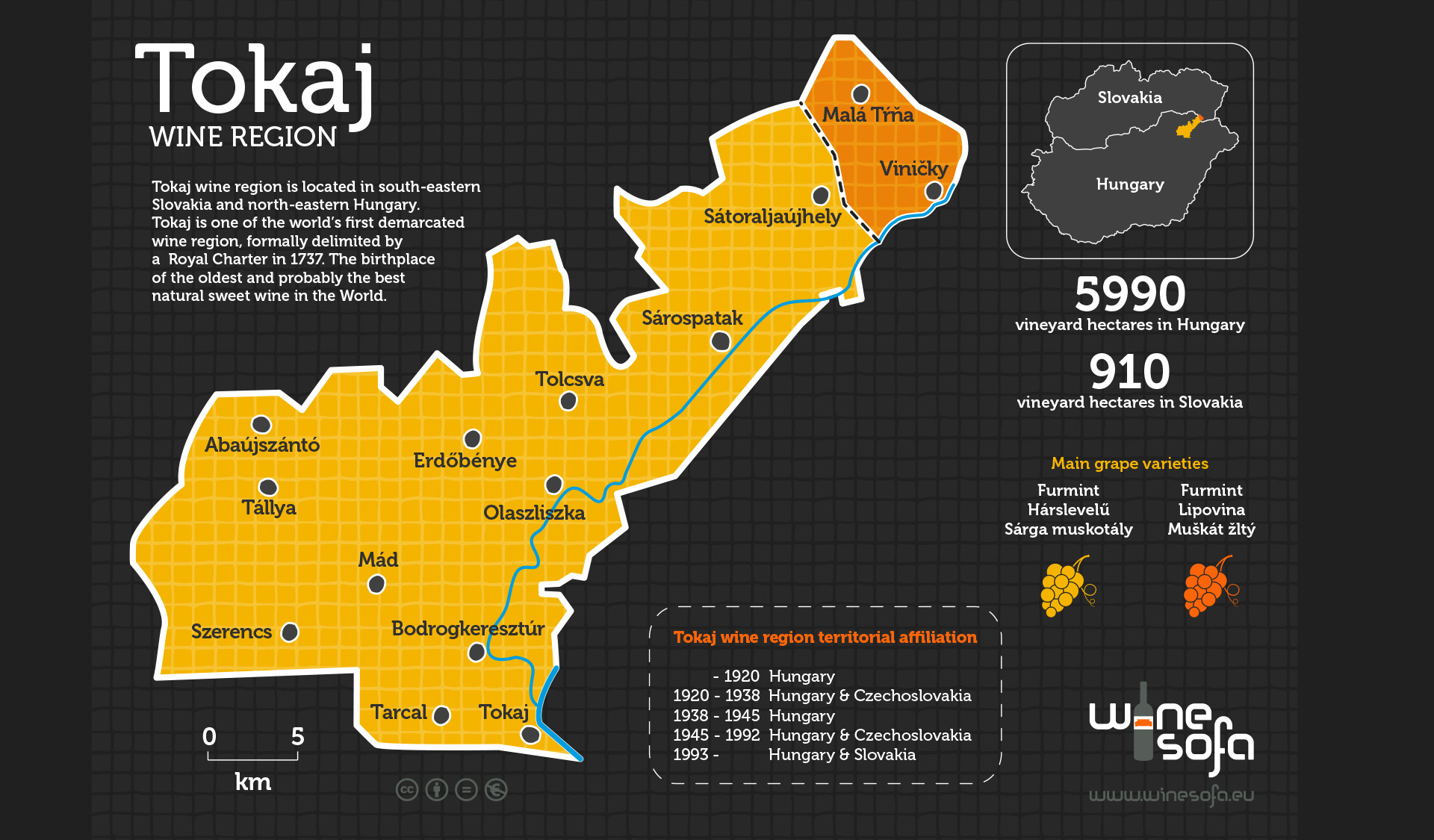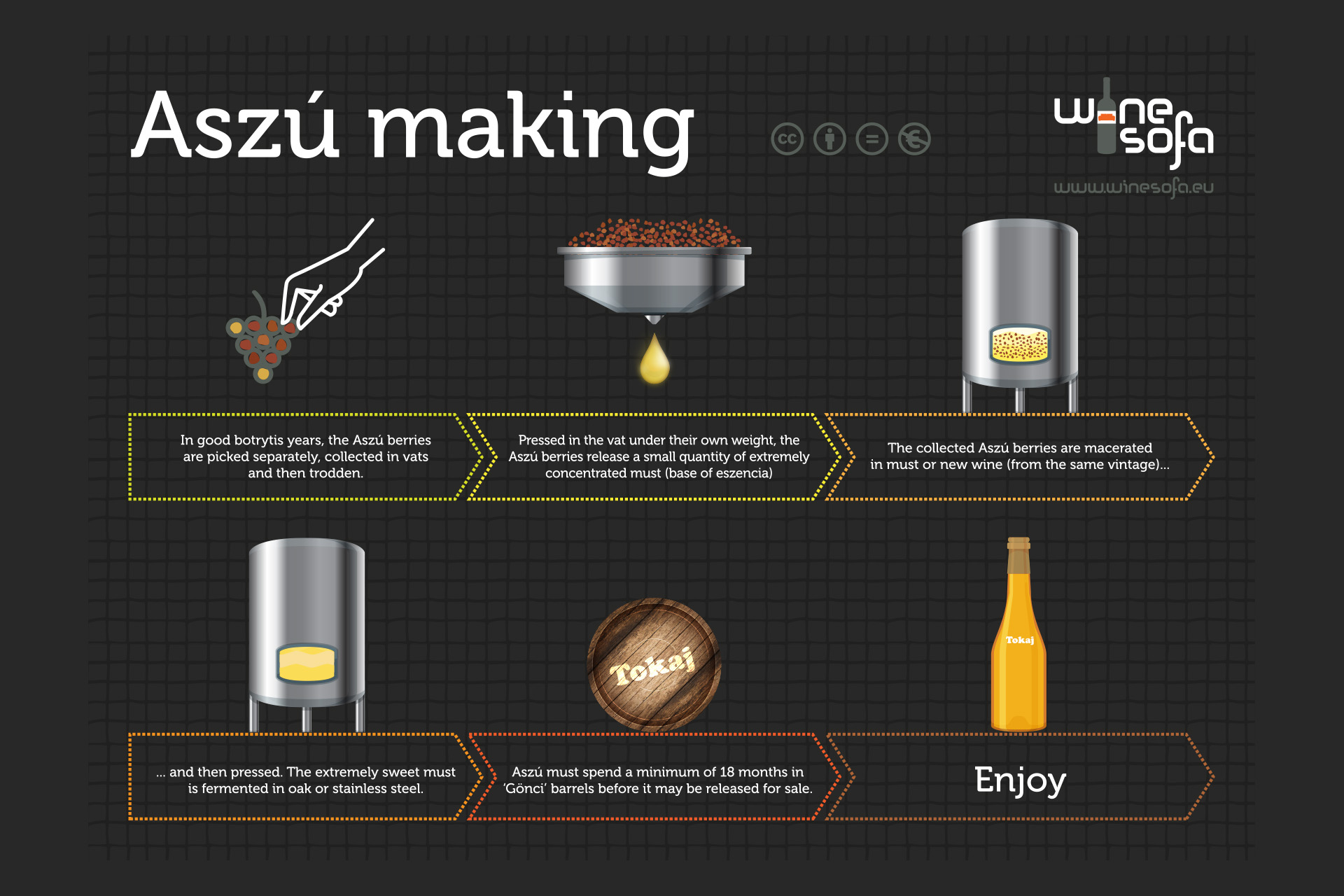Photo by István Balassa
You are new here? For the 1st part of this article click here.
Thanks Tatars and Turks!
According to the records, at the time of the Tartar invasion (1222) Tokaj-Hegyalja was almost completely destroyed; the vineyards were lying waste, people died or fell captive. But the subsequent reconstruction fundamentally changed Tokaj. On the one hand, Latin-speaking Italian settlers arrived to the region and, on the other hand, they brought along some grape varieties and technical innovations, so viticulture boomed once again. Later viticulturists running north from the Turks added their share to Tokaj’s culture, so the interaction of the above two people may have led to the citizens of the towns of Felvidék (Upper Hungary in the Kingdom of Hungary, today part of Slovakia) (Kassa, Bártfa, Eperjes – today in Slovakia: Košice, Bardejov, Prešov) and the towns themselves beginning to buy vineyards in Tokaj-Hegyalja.
In the second half of the 1400s, during the reign of Matthias Corvinus, King of Hungary, the king’s decrees suggest that the wines of Syrmia and Tokaj became rivals and, what is more, the merchants in the towns of Upper Hungary and through them the Polish market began to favour the Tokaj wines. This was reflected primarily through the volumes ordered, as the price of the wines from Syrmia was higher (e.g. in Bártfa) between 1520 and 1523 but then, in 1521, Nándorfehérvár (today Beograd, Serbia) fell, followed by Titel, Szabács (Šabac), Zimony (Zemun) and Pétervárad (Petrovaradin) and the Turks took possession of the area for a long time. The last wine shipment from Syrmia arrived to Terebes (Trebišov) in 1523 closing the glorious history of the Syrmian wines.
Together with the above, it can also be observed that by 1530 the price of the Hegyalja wines doubled. Though, this is not merely because of some good luck and the loss of Syrmia but because of a continuing development lasting almost a hundred years, the peak of which coincided with the Turkish expansion. So, this way, by the time the Polish market took notice of the opportunity, Tokaj had already been ready.
This is also the time when the aszú wine was created. As we have already pointed out in the part about Máté Laczkó of Szepsi, indirect (1534) and direct (1571) evidences prove that Aszú wines were first made in Hegyalja in the 16th century. However, at the time Aszú had a different meaning than today. The puttony number was unknown, since aszú berries were not individually picked. At that time, aszú wines were made by a “natural process”, they were the gifts of the given vintage, consequently they were just really rarely born. So, let’s look at what constellations were required to fill a cellar with aszú wines. On the one hand, hoeing the vineyards three times a year became wide-spread, but then the date of harvest was significantly postponed. These given, only the rains (that are just as much hoped for today) and a subsequent Indian summer were needed for the development of noble rot. The perfect vintages of the aszú wines at the time could reach or even surpass the nutrient content of six puttonyos wines of later times. Taking into account our experience today, this is absolutely possible, it is enough if we just think of those clusters fully covered with noble rot. The only problem was that this happened only once in a decade, or rather two decades, while the demand for the sweet Tokaji wine just kept increasing…
Is it grown or is it made?
What’s the difference? The above-mentioned natural aszú wines were basically wines made with szamorodni making technique by harvesting the grapes with such a high sugar degree of the must that they were able to reach the aszú category on their own. But in order to evade the unpredictability of the weather, people found out that aszú can also be made. These wines were later called “szemen szedett” (referring to picking the berries one-by-one) or “tsinált” (made) aszú wines. Here the technique was similar to what we use today, i.e. during the process of developing noble rot, the berries covered with noble rot were picked one by one from the clusters and then the collected berries were trampled on (crushed aszú berries) and must, new or aged wine was poured on it. A wine writer if attempted to clarify all this would have a really hard time.
The current regulation says that only must or wine of the same vintage may be poured on the berries covered with noble rod, however it does not seem to be confirmed that the process was the same four hundred years ago. What is more, some say that using aged wine may have helped the winemakers if they happened not to have produced good quality wine in the given year. It is not our job to do justice, what is important is that with the emergence of the new-type aszú wines that were made, the demand for the sweet aszú wine could be satisfied at once and wagon caravans could depart for Poland.
“Incipit in Sátor, definit in Sátor”
From Sátor to Sátor (means tent to tent), i.e. the wine region covers the area from the mountain at Abaújszántó to the mountain at Sátoraljaújhely, at least as the old saying goes. And this gave grounds to many arguments in the past centuries.

The "tenthill" of Abaújszántó in the past
Let’s see them one by one. What defines the area of the wine region and which settlements are its members? Already in the 17th century the demand for aszú wines was so high that wine fraud was committed on massive scale. Therefore, first the towns around the Tokaj mountain, namely Tarcal, Tokaj and (Bodrog)Keresztúr forged an alliance in 1570, then in 1613, the market towns of Mád, Tállya and (Abaúj-)Szántó also agreed on their principles related to viticulture. This was followed, in 1641, by the issuing of the Regulamentum stating the common interests of Pentapolis (Košice and the market towns of the Spiš region) and the settlements in the wine region. The settlements involved were Tokaj, Tarcal, Mád, Tállya, Szántó, Szerencs, Zombor, Liszka, Bénye, Tolcsva, Keresztúr, Ond and Rátka, meaning that Sárospatak and Sátoraljaújhely were left out.

St. Elisabeth Cathedral in Košice, photo by Daniel Ercsey
Then, at the beginning of the 18th century Francis II Rákóczi regulated the vineyard matters by distinguishing Hegyalja (using this notion for the first time) from the rest of the wine regions of the country and naming it the only first-class wine region. After the defeat of the war of independence, a new committee was set up to prevent wine fraud and this led eventually to the king pronouncing Tokaj-Hegyalja a closed wine region in 1737 being the first in the world to do so (let’s be fair, the Italians dug up a document saying that a similar thing had already been done in 1716 in Chianti). It practically meant that only the settlements listed in the decree were allowed to make wines under the name Tokaji, such settlements were: Tokaj, Tarcal, Keresztúr, Zombor, Rátka, Mád, Tállya, Szántó, Golop, Ond, Szegi, Kisfalud, Bénye, Liszka, Vámosújfalu, Tolcsva, Horváti, Zsadány, Olaszi, Patak, Újhely and Kistoronya (today Mala Trna, Slovakia). It is interesting that Szerencs was omitted from the list, however Ond and Golop were included despite being objected by Zemplén County.
It is also important to mention János Matolai’s name, who was one of the most renowned viticulturists and wine making experts of the era and who made the first classification of the parcels of vineyards (dűlő) of Tokaj in 1732. These parcels split into three categories based on their qualities also provoked long-lasting arguments. According to Matolai’s considerations the parcels giving “noble and palatable” wines that are “highly esteemed and preferably bought by the foreigners by virtue of certain deep appreciation” fell in the first class. The second class involves areas whose wines are good but “not that sweet and palatable” than their counterparts in the first class. The third class is still good but cannot be compared to the first two classes. It is vital to mention also that although Matolai did a seriously great job, the classification of the parcels was eventually not included in the king’s decree of 1737 due to the objection of the land owners, thus it was never officially implemented in Tokaj-Hegyalja.

The Tokaj Hegyaljai Album
The next parcel classification is usually referred to as the Szirmay classification even though it was made by János Dercsényi in 1796. This second classification was not either ratified by a king’s decree, however there was an increased demand for it due to the growing wine fraud. In 1822, János Kaszner made a classification of the parcels which was followed in 1867 by the Tokaj Hegyaljai Album (in which József Szabó elaborates on this topic) which, for some reason, failed to cover the settlements Ond, Szerencs, Bekecs and Legyesbénye but included Monok, Petrahó and Nagytoronya (Velka Trna, Solvakia) that were not part of Tokaj-Hegyalja (under the applicable laws at the time). Around that time, displaying the names of well-known production areas on the bottle labels was already trendy among the wealthiest landowners which also refers to an increasing demand for parcel classification. But this was prevented again and again by the conflicting interests.

László Alkonyi and his map of the new classification in Tokaj, photo by Zita Nagy
Today, winemakers have a renewed predilection for using the parcel names and geographical locations for marketing purposes, however the initiative of László Alkonyi, a former wine writer, namely to complete the classification of the parcels based on the Matolai classification was rejected again due to the conflicting interests.
You can read more about Tokaj in the third part of this article.









